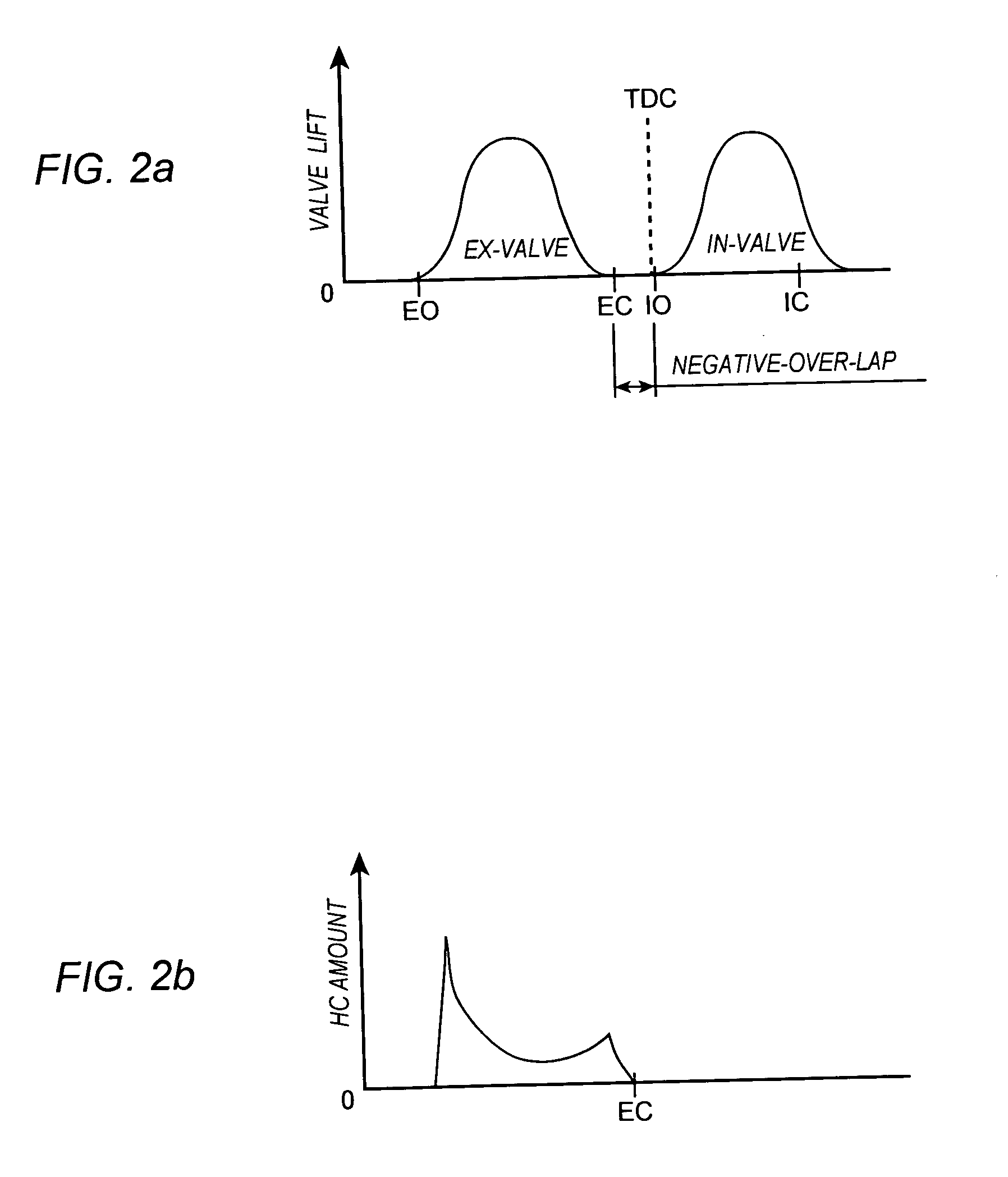Variable valve timing controller for an engine
a timing controller and variable valve technology, applied in the direction of electric control, ignition automatic control, machines/engines, etc., can solve the problem of unstable combustion within the engine cylinder
- Summary
- Abstract
- Description
- Claims
- Application Information
AI Technical Summary
Benefits of technology
Problems solved by technology
Method used
Image
Examples
Embodiment Construction
[0036] Referring to FIGS. 1 through 7, there is shown a variable valve timing controller (VVT controller) constructed in accordance with a preferred embodiment of the present invention.
[0037] The VVT controller consists mainly of an electronic control unit (ECU) 1 and variable valve timing mechanisms (VVT mechanisms) 2, as shown in FIG. 1. The VVT mechanism 2 is e.g., vane-type WT mechanism. They are respectively interposed between an exhaust camshaft 25, which drives an exhaust cam 26, and an exhaust cam sprocket (not shown) and between an intake camshaft 27, which drives an intake cam 28 and an intake cam sprocket (not shown). By the VVT mechanisms 2, the phase of the exhaust cam 26, which drives an exhaust-valve 5, with respect to a crankshaft (not shown) and the phase of the intake cam 28, which drives an intake-valve 4, with respect to the crankshaft can be varied. Accordingly, the intake- and exhaust-valves 4 and 5 can be opened and closed independently at different times.
[0...
PUM
 Login to View More
Login to View More Abstract
Description
Claims
Application Information
 Login to View More
Login to View More - R&D
- Intellectual Property
- Life Sciences
- Materials
- Tech Scout
- Unparalleled Data Quality
- Higher Quality Content
- 60% Fewer Hallucinations
Browse by: Latest US Patents, China's latest patents, Technical Efficacy Thesaurus, Application Domain, Technology Topic, Popular Technical Reports.
© 2025 PatSnap. All rights reserved.Legal|Privacy policy|Modern Slavery Act Transparency Statement|Sitemap|About US| Contact US: help@patsnap.com



